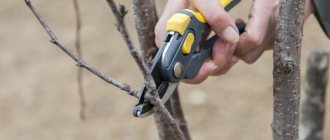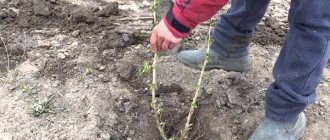With the onset of autumn, beautiful chrysanthemums begin to bloom in flower beds. For a long time, until the very frost, they decorate the garden. If the climate is mild, then you can admire their blooms until the snow. Autumn replanting of chrysanthemums is an excellent way not only to prolong flowering, but also to protect them from freezing.
Is it possible to replant chrysanthemums in the fall?
Chrysanthemums are very popular in gardening, so planting and caring for them is full of controversy, especially in the fall when pruning is carried out. This also applies to the benefits of replanting chrysanthemums in the fall. Some believe that this is not necessary, but experienced gardeners say that replanting chrysanthemums in the fall promotes the development of the root system and enhances frost resistance, which is just important before the onset of cold weather.
Latest articles about gardening
Rhododendrons in the Urals care and planting
Rose floribunda varieties with photos and names
Climbing rose: planting and care in open ground, photo
What to do after flowering
After the flowering period ends, it is right to give the chrysanthemum a rest. If the buds stop appearing and the stems begin to lean to the sides, the plant can be cut off almost at the root, watered and placed in a cool place. There is no need to water anymore at this time.
When spring comes, the chrysanthemum will begin to grow again. The pot needs to be taken out and placed in its usual place; replanting will not be unnecessary. Next, you should take care of the formation of the bush. It is regularly pinched so that the plant has an attractive shape. Otherwise there will be one tall stem with a small number of buds.
Growing chrysanthemums requires some effort. But if you care for them correctly and replant them on time, using suitable soil, the plant will bloom profusely and brightly in the fall.
When can you replant chrysanthemums in the fall?
It is better to replant chrysanthemums in the spring, and in the fall, dig up the bushes along with a large lump of earth and put them away for the winter in a dry basement with a temperature of +5 degrees. But if you have winter-hardy varieties, then you can replant them in the fall, you just need to calculate the planting time correctly.
The best time to plant chrysanthemums in the fall is late September - early October. A cloudy or even rainy day will be the most ideal day for planting.
If replanting chrysanthemums is carried out in October, then it is best to avoid replanting bushes that are already flowering, since they will be accepted in a new place much worse than those that have not yet begun to bloom. When replanting a flower, it is necessary to select those bushes in which the root system is already fully formed by shoots; it is necessary so that the plant’s survival rate is accelerated.
Remember: in order for your bushes to take root well, for planting in the fall, choose those plants on which basal shoots have formed. During this period, you should not plant bushes that are blooming, as there is a risk that they will not take root and die.
Nice place for flowers
It is important to plant a chrysanthemum in the fall in a place where it can take root in the shortest possible time. In the case of this flower, this is a dry, sunny place. Chrysanthemums do not tolerate shade and large amounts of moisture, so it is better to plant them at some elevation. As a rule, in such places there is no dense shade, and a slight breeze blows through the ground, thereby removing excess moisture.
Read also: Mukdenia Karasuba - planting and care in open ground
What happens if you plant a chrysanthemum in the shade? The plant will simply stretch out greatly, because it will seek sunlight. In this case, there will be few leaves on the stems, and the flower itself will be very weak. Excess moisture will lead to rotting of the roots, which will have a bad effect on the wintering of chrysanthemums.
We plant chrysanthemums in the fall in loose soil that allows moisture and air to pass through well. This will ensure the plant rapid growth and abundant flowering. Don't forget about the nutritional value of the soil. The more organic substances and minerals it contains, the better. If the soil in your garden is not at all like this, then you can improve its quality yourself. To do this, fertilize the soil with rotted manure and add peat or compost. You can also mix the soil in which you will plant the flower with sand. This will improve its drainage qualities.
Photo from the site: strgid.ru
Place to plant chrysanthemums in autumn
Chrysanthemums prefer sunny areas. It is better to lay out the bed on a hill. In the shade the plant looks depressed. The flower is sensitive to groundwater. If they lie close to the roots, good drainage will be required. River sand can be used as a drainage layer.
The soil on the site should be loose, preferably neutral or slightly acidic. If the soil for planting is too heavy, then it is enriched with peat, humus and rotted manure. Add no more than 0.5 kg to each well. fertilizers, otherwise next year the plant will have a good crown, but flowering will be poor.
Where to plant chrysanthemums
A dacha or a private house is a magnificent testing ground where you can realize any ideas regarding landscaping. The chrysanthemum can be an excellent instrument.
The flower can grow in almost any area and even in pots. It is precisely for this unpretentiousness in choosing a place that many gardeners love this crop. Options for where to place flower bushes:
- specimens can be planted in open areas. The plant is not afraid of wind, drafts, or direct sunlight, but it is better to choose slightly sheltered areas. A lot of free space can cause the bush to fall apart;
- You cannot choose areas where the soil is too clayey and wet. A wetland can lead to rotting of the root system and complete death of the plant;
- The ideal option would be a small hill with a good drainage system.
Note! The same conditions for choosing an area for planting must be taken into account if annual varieties are used.
The principle of bush distribution
Chrysanthemums fit perfectly with any type of plant and will decorate any flower bed. Therefore, there is no need to think about combining plants in the garden bed.
At what distance to plant chrysanthemums
Regardless of the size of the area, you need to adhere to specific recommendations regarding the distance at which to plant the specimens from each other. Just a few facts you need to know:
- the distance between the bushes can be approximately 30 cm if the varieties are low-growing, and more than 50 cm if there is a high above-ground part;
- the principle of arrangement of copies relative to each other is arbitrary. It can be a strip, a circle, a semicircle, any geometric figure;
- It is advisable to place specimens at a distance of more than 1.5 m from tall trees and buildings, since the plant does not like shade.
Features of accommodation
Note! The same placement principle is taken into account when arranging flowerpots with chrysanthemums. Considering these recommendations, it turns out that you can plant a flower almost anywhere in the garden or flower bed.
Considering these recommendations, it turns out that you can plant a flower almost anywhere in the garden or flower bed.
Preparing a flower bed for replanting chrysanthemums in the fall
First of all, prepare the soil for the flower bed. Important: prepare the soil in dry and clear weather, and plant on a cloudy day after rain or directly during rain. This allows new plants to take root and take root. Since we are replanting in the fall, the flowers must have time to build up the root system before winter. This means you need a large amount of peat, vermicompost, humus or compost. The flowerbed is dug up manually or using a walk-behind tractor. Then, in accordance with the flowerbed plan, the holes are prepared. The holes are dug approximately 2 times deeper and 15 centimeters wider than needed for planting a chrysanthemum bush. After the holes are ready, the dug soil is mixed 1 to 1 with compost, peat or humus, then I pour some of it back into the hole. We make the distance between the holes 30-35 centimeters. After this, the flowerbed can be left until the chrysanthemum is transplanted.
Latest articles about gardening
Honeysuckle: planting and care in open ground
Barberry: planting and care in open ground, photo
Hibiscus: planting and care in open ground
Tips and recommendations from experienced flower growers and summer residents
Chrysanthemums that have been wintered indoors should not be planted in open ground without prior preparation. They need a little time to strengthen and adapt to new conditions. Flowers need hardening - for this, plants are taken outside in pots and only 7-10 days later they are planted in the garden.
After wintering, it is allowed to plant chrysanthemums in the old place, since over the intervening time the soil has had time to “rest.” The holes are first filled with ash mixed with soil. Plants need regular watering. You can feed the flower 2 weeks after its “relocation” to open ground. If the plant is expected to be tall, it is necessary to install a support for it in advance, otherwise the chrysanthemum may break at the slightest breath of wind.
Thus, by following all the recommendations listed in the article, the transplantation procedure will be successful: the plant will quickly take root in a new place and will actively develop and bloom throughout the season.
Transplanting chrysanthemums in autumn
Chrysanthemums do not like the slightest shading and moisture retention, so the place for them should be sunny and at least slightly elevated. This is a guarantee that the shoots will not stretch or change the time and period of flowering. However, the root system of chrysanthemums is superficial, so the soil should not be too dry.
The ideal day for planting is cloudy or rainy. In hot, sunny weather, plant cuttings in the early morning or late evening when the sun is less active. The chrysanthemum is placed and covered with earth. The roots grow parallel to the soil, so they are not buried too deep. Tall varieties require additional support.
Watering chrysanthemums in autumn
For irrigation, only water that has settled in a barrel, preferably rainwater, is used. Chrysanthemums love moisture, so watering should be plentiful. It is better to use a garden watering can without a sieve, since drops of water falling on the foliage will negatively affect the decorative appearance of the bush. If the soil is not mulched, then once a week it is recommended to weed and carefully loosen the top layer of soil.
Latest articles about gardening
Sheltering a peach for the winter
Chrysanthemum: how to care for it at home?
Why do onions rot during storage and what to do?
How to properly pinch a chrysanthemum
To grow a beautiful spherical bush, you must always pinch the plant above the 8th leaf. After this procedure, active growth of side shoots begins, which also need pinching. However, this rule does not apply to border chrysanthemums, which already grow in a compact bush. If you pinch them additionally, you may not wait for flowering.
Tall large-flowered chrysanthemums are pinched differently. The apical shoots are shortened as soon as they reach the required length. But it is better to cut out the side shoots completely at the root, leaving only 3-4 most developed ones. If this is not done, the flower baskets will become smaller, the bush will grow greatly and lose its attractiveness.
Advice! For tall chrysanthemums, it is better to build supports that will support the shoots from the wind.
Fertilizing transplanted chrysanthemums in autumn
Preparation of chrysanthemums for winter begins in different regions in different ways and depending on their variety. There are varieties that need to be dug up in the fall and then stored in a dark and cool place. And some varieties overwinter well in the ground. They begin feeding from the end of August to the beginning of September. This is the most suitable period for applying fertilizer, since the soil has not yet cooled down and the flower can absorb nutrients well. If fertilizers are applied later, then not all nutrients will be absorbed and the flower will go into winter weakened. For the full development of the root system, chrysanthemums are fed with fertilizers. Every bush is fertilized. Organic matter saturates the soil best. But you can enhance the positive effect with superphosphate and potassium preparations. The main thing to remember is that when using chicken manure or compost, they must be diluted with water. The ratio of organic matter and water is one to ten. Otherwise, you can harm the roots of chrysanthemums.
Post-procedure care
The stages of agrotechnical care for chrysanthemums will differ depending on the time of their transplantation. In autumn, chrysanthemum bushes need to be irrigated once a week. For irrigation, use settled or rainwater; it should not be cold. When moistening chrysanthemums, it is necessary to ensure that water does not get on the leaves, as in cool weather this can lead to the development of fungal diseases.
Spring and summer irrigation is carried out depending on the weather; if it is very hot, the procedure is carried out twice a week. After each watering, the soil around the bushes is loosened and weeds are selected. After each irrigation, mineral fertilizers containing phosphorus and potassium are applied. Compositions with nitrogen are not used so as not to provoke active growth of green mass before the onset of cold weather. In addition to industrial fertilizers, organic fertilizers are also used. Mullein or bird droppings are diluted in water and the bushes are watered with this solution.
In the spring after transplantation, chrysanthemum bushes need nitrogen fertilizing for active growth; this is carried out 2 weeks after moving the plant to a new location. During the budding period, crops need potassium and phosphorus, this will ensure lush flowering.
The next step in caring for chrysanthemums is pruning. The shaping procedure is carried out only in the spring. To get a spherical shape of the bush, the top shoot must be pinched above the 7th leaf. This is done when the length of the shoot is at least 15 cm. At the same time, the side branches are removed. Work must be completed before the formation of inflorescences begins.
Some gardeners prefer not to prune flowers before wintering, but this procedure has many advantages:
- During the pruning process, diseased, broken and disease-affected shoots are removed.
- Shortened chrysanthemum stems require much less resources for their functioning; the rest is used to maintain the root system during the cold period.
- Trimmed flowers become compact and easier to protect from frost.
They begin the pruning procedure as soon as there is a steady cold snap with sub-zero temperatures. It is necessary to leave the stumps 10-15 cm from the ground and cover them with soil with the addition of humus. The height of the layer is within 10 cm. It is important to carry out all work with disinfected tools so as not to introduce pathogens. To do this, use alcohol or manganese solution.
It is recommended to insulate chrysanthemum bushes before winter. The scale of shelter construction depends on the climatic characteristics of the growing region. In the southern regions, it is enough to throw a half-meter layer of dry hay or sawdust on the plants and cover them with spruce branches on top. In the northern regions, wooden boxes or boards are used for shelter. This is all covered with hay mulch, and covered on top with material that allows air to pass through. You should not use plastic film to insulate chrysanthemums; this will lead to damping off of the plants during a thaw.
Tips for caring for chrysanthemums
- If the plant does not have enough light, the buds do not open.
- Excessive sunlight causes leaves to fade and wilt. This can also happen due to poor watering. In particularly advanced cases, the leaves fall off.
- At high temperatures (more than 25°C), Chrysanthemum blooms rather poorly; even if the buds bloom, they wither very quickly and fall off. If overheating is accompanied by a lack of ventilation in the room, the plant sheds both buds and leaves.
- Chrysanthemum has poor resistance to fungal diseases. If the agrotechnical principles of cultivation are violated, the stems become deformed and the leaves become discolored. If this happens, you will have to get rid of the plant; it cannot be resuscitated.
- In some cases, there may be insect pests on Chrysanthemum. Most often it is aphids. To destroy it, the plant is watered with a soapy water solution once every 7 days. In addition to aphids, spider mites can settle on the flower. The control of these pests is the use of pyrethrum for treatment. A tincture of crushed garlic in water also helps. Without a doubt, effective control can be carried out with store-bought pesticides, however, you should be careful with the chemicals used and strictly follow the dosage.











